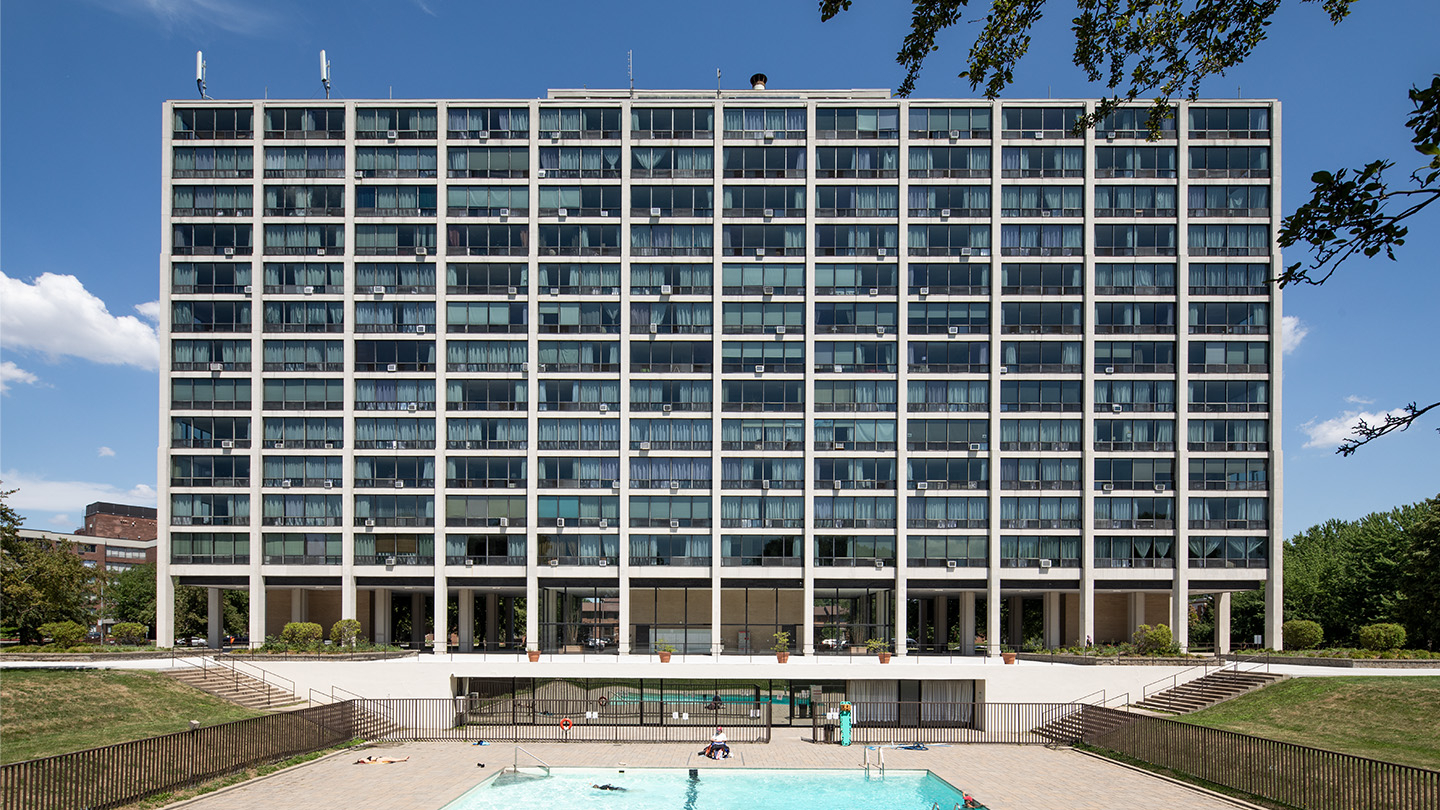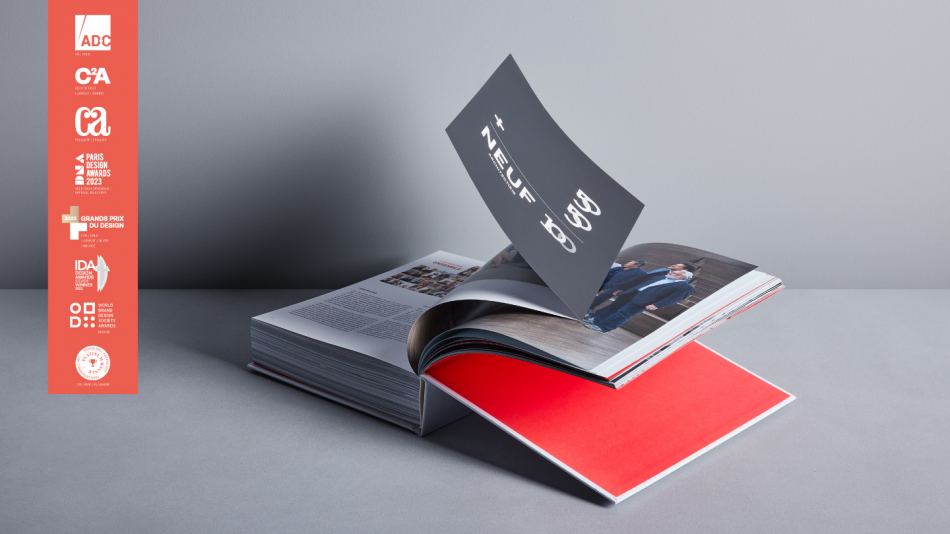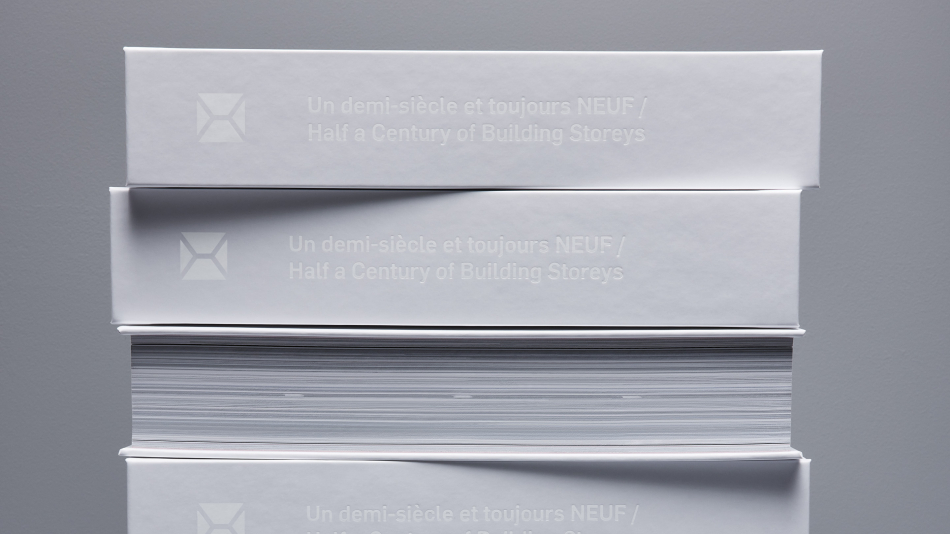FROM CLOISTER TO CONDOMINIUM
On August 21, 1956, an article titled "The most beautiful residential center in North America" introduced the Montreal public to the vision of a new town of 50,000 to be formed on Nun’s Island. After having bought the island from the Congrégation de Notre-Dame (owner of the land since 1769) for $1.3mililion ($12.5 million today), the Quebec Home and Mortgage Corporation (QHMC) were having trouble realizing their ‘dream city,’ which was still only on paper. To get the project started, they signed an exclusive lease with Structures Metropolitan Canada, giving (SMC) sole development rights of the island for almost a century. As part of the agreement, all buildings were rented instead of sold.
The organization of Expo 67 around the same time solved the two major problems that had prevented the development of the island until then: no direct link with Montreal and the annual floods. The construction of the Champlain Bridge and a dam on the west side solved both, while also backfilling and stabilizing parts of the island. It increased the island’s surface and gave it more value. But the real estate market situation was changing rapidly and the rental sector was saturated in the late 1970s. Unable to continue the agreed-upon development, SMC sold their rights to the vacant land to various other developers. The first building for sale and not for rent in 1977 was a 164-condo pyramid, with prices ranging from $40,000 to over $100,000.
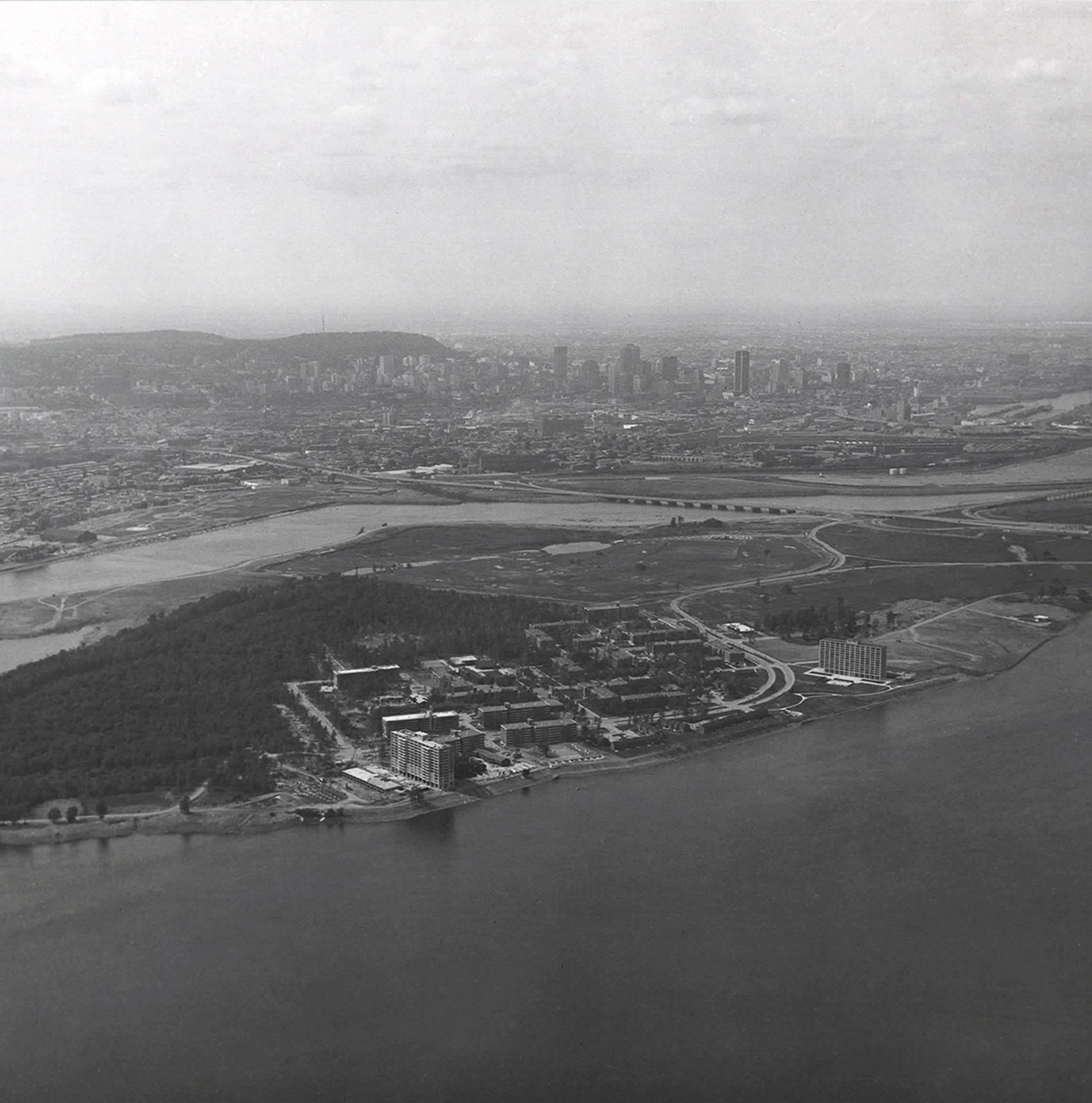
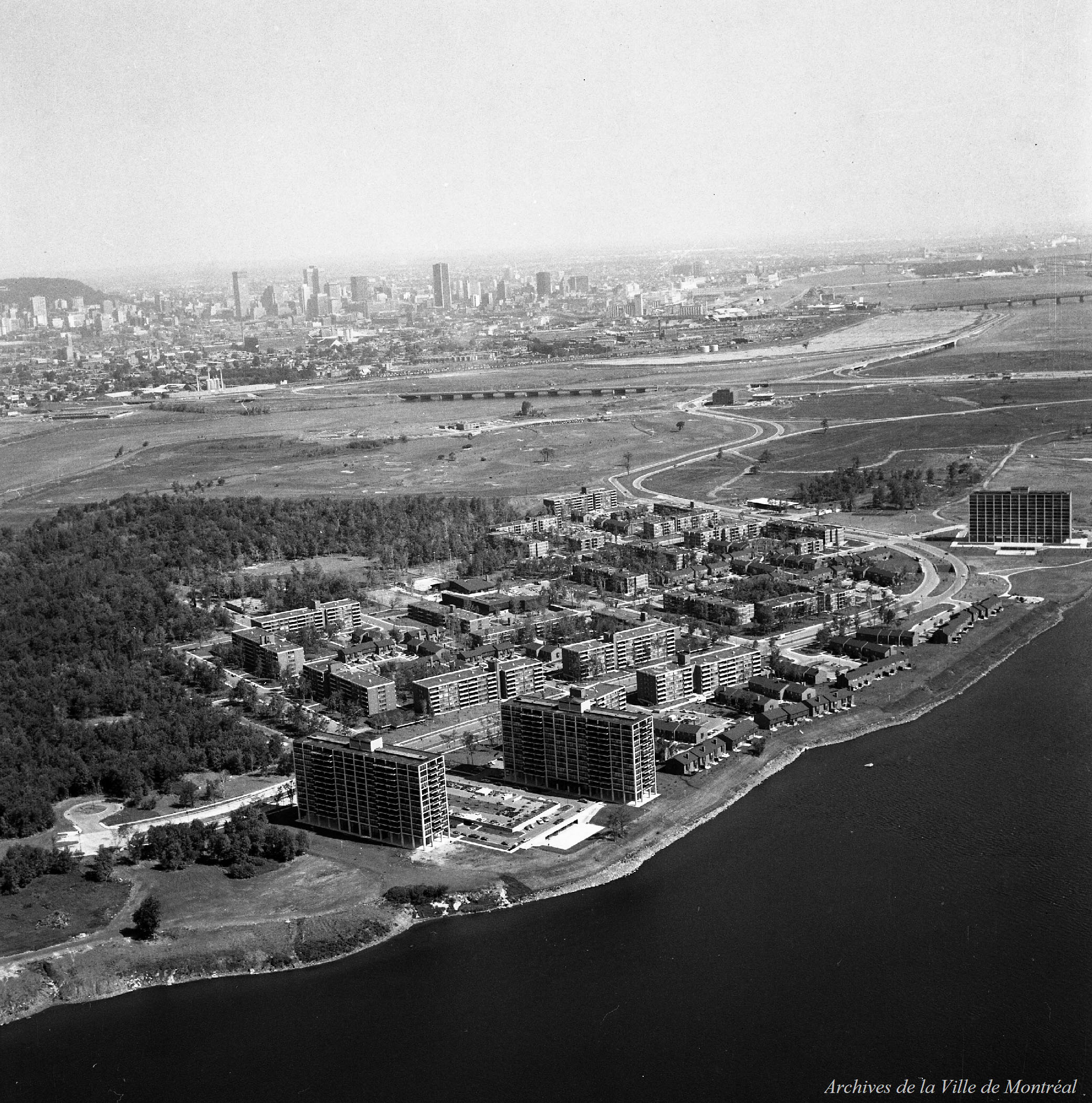
IN THE FOOTSTEPS OF MIES VAN DER ROHE
Involved previously with Metropolitan Structures of Chicago, internationally renowned architect Mies van der Rohe joined the development team of Nuns' Island at a very early stage. The "dream city" project gave him the opportunity to build on his previous ideas of master planning and residential towers. His characteristic style, expressed through abstract compositions and pure volumes, can be seen in the gas station he built on the island in 1968, now listed in the Répertoire du patrimoine culturel du Québec
Following the departure in 1970 of Philip D. Bobrow, the resident architect in charge of Phase I, the firm of Tornay-Desmarais was selected for the subsequent phases. For Towers II and III, they were asked to balance integration with nature, the Miesian vision, and the new tentants’ desire to have direct access to the landscape. The solution was to add balconies to the pure volume designed by Mies. This delicate negotiation foreshadowed the firm’s careful steps taken during the development of the rest of Phase II, which received an award from the Canada Housing Design Council. It also led to the continued collaboration with the Gewurz family, which allowed NEUF to be involved in the realization of the island for the next 50 years, through numerous towers, houses, apartments, stores, offices, golf centres, and even master plans.
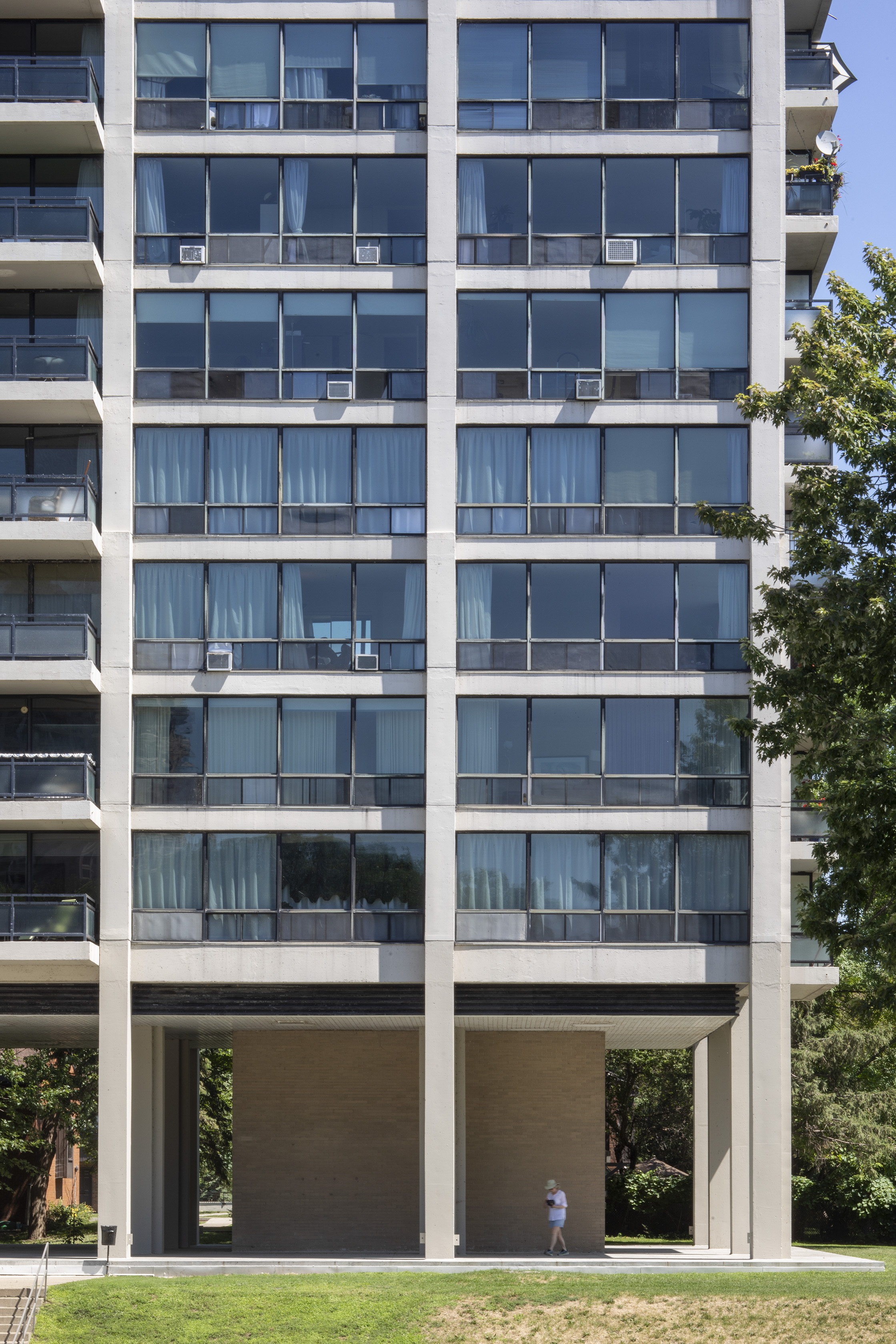
MONTREAL'S OWN GARDEN-CITY NEIGHBOURHOOD
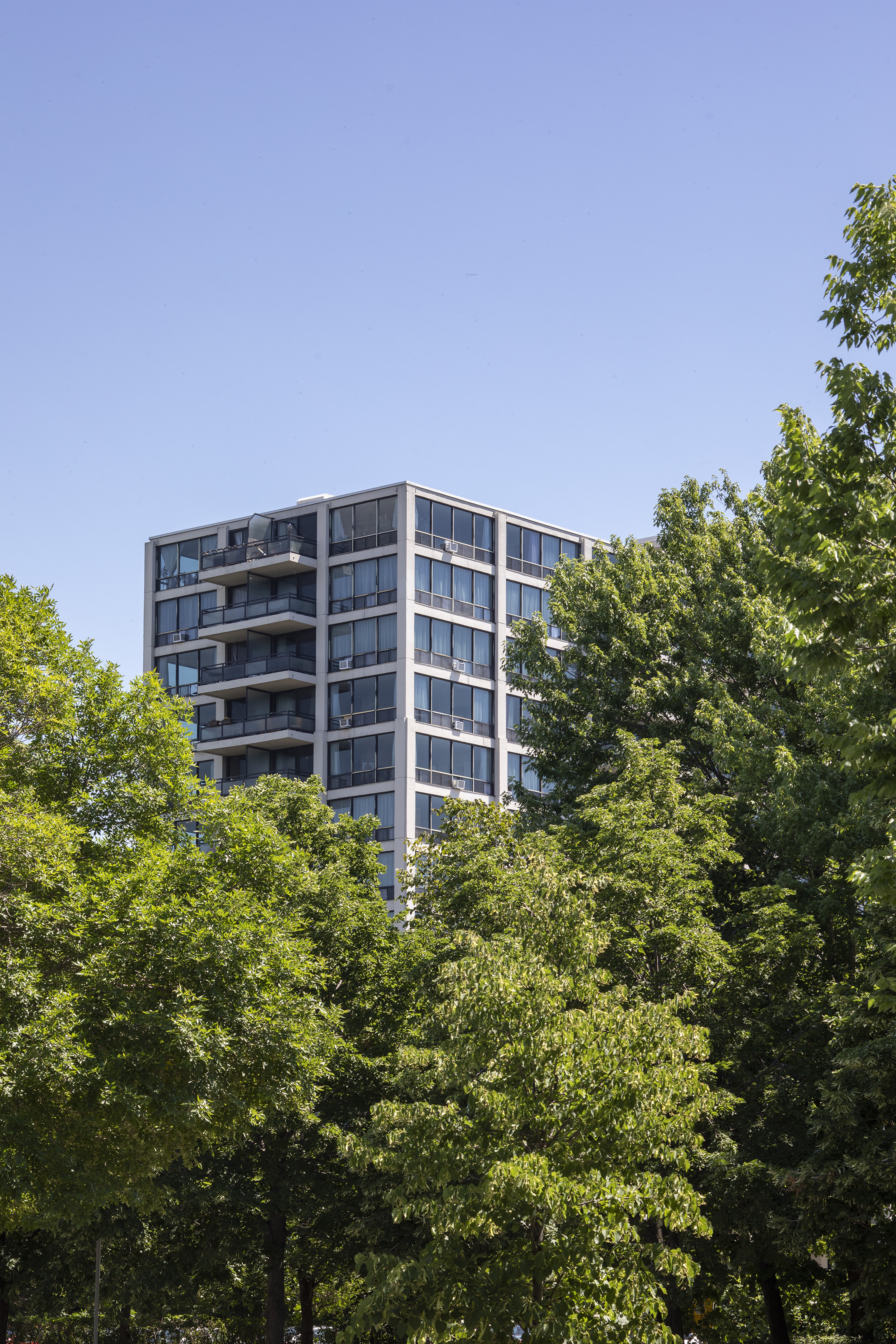
The first and second (unrealized) master plans for the island–in the midst of North American cities’ experiments in modernization–balanced urban density with nature. When SMC entered the scene in 1965, it proposed an expansion of this development concept through a mixed density of high-rise and low-rise rental units embedded in the landscape. Using their previous development experience in the US, SMC hired its own teams of architects, planners, engineers, traffic consultants, and ecology specialists to make its vision a reality.
After their departure in the late 1970s, Proment became the most active developer of the island. Following many years of negotiations with the municipality for the preservation of the forest, the company employed NEUF to develop the Pointe Sud neighbourhood. Following the SMC plan for a network of urban pockets with strong architectural identities, each with a dedicated park, the residential development respected the continuous pedestrian access to riverfront trails, preserved woodland, and newly created recreational public green areas. The model followed that of the garden city as it was introduced on the island in 1965, understanding that this type vision is extremely rare in Montreal.
BEYOND THE VISION
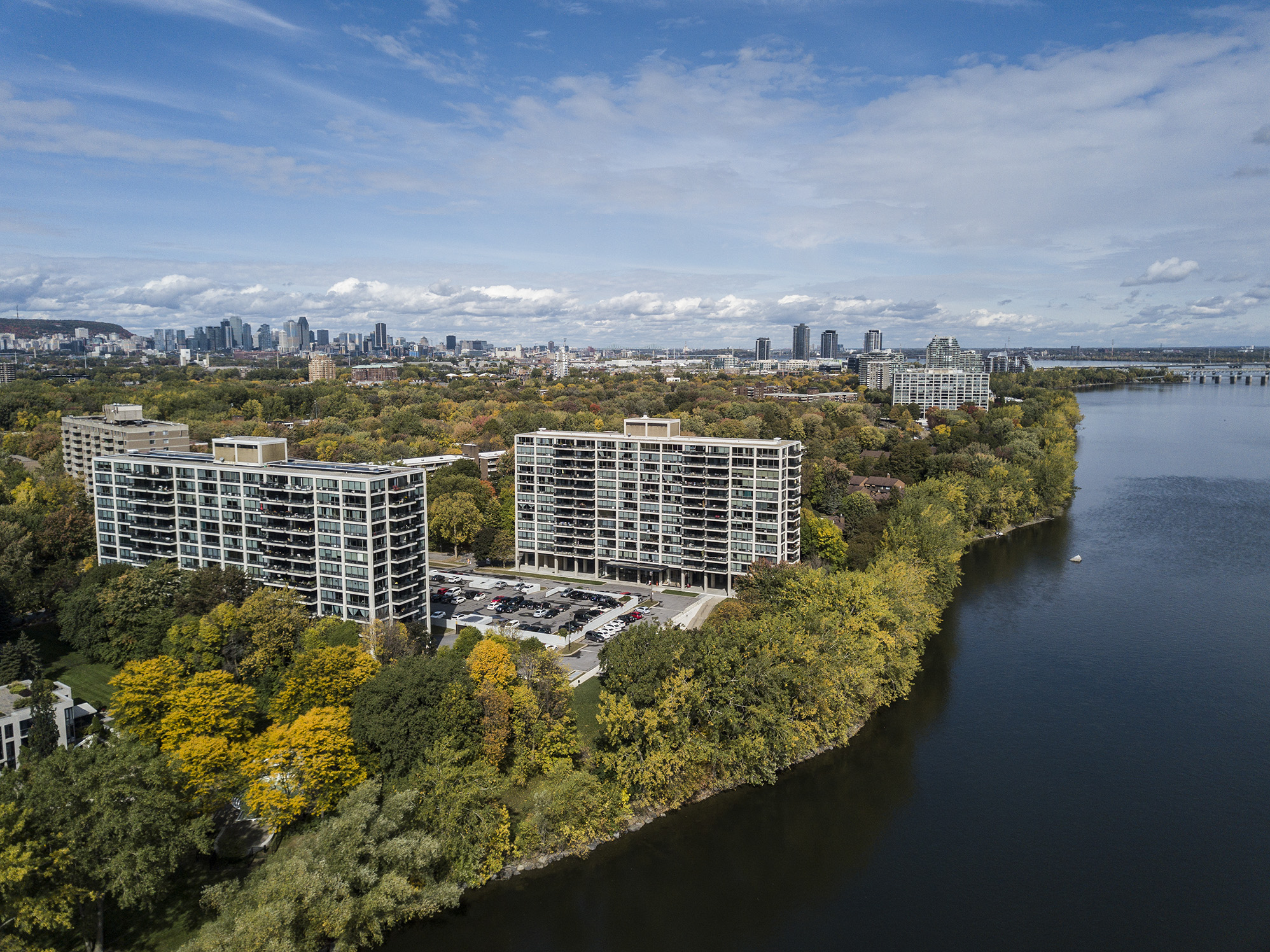
After many obstacles and unforeseen events, the Nun’s Island project is coming to an end with the last development of the Pointe Nord district. The island’s location and size proved ideal for a full-scale experience in an alternative city lifestyle, with a variety of housing providing the critical mass needed to establish a viable community. This mix, necessary for the daily life of the island's inhabitants, made it possible to achieve a high built density while preserving the natural character of the island, continuing the founders’ vision for integration with the landscape.
Contrary to the predicted 50,000 residents, the population will only reach 30,000 despite the island's surface area being 40% larger than when the nuns occupied it. The number of residences will remain 20% lower than that envisaged in 1965, but they will all benefit by the green spaces, parks, and riverfront trails along the St. Lawrence, which turned out to be much larger than imagined.
It is also interesting to note how unexpected occurrences, adaptations to the economic and social context, but also to the changing values held by citizens and city officials, have helped shape Nun’s Island. Responsible for the design and construction of a significant number of residential, commercial, industrial, and recreational buildings, NEUF has made a significant contribution to the accomplishment of this major urban project, affecting the lives of tens of thousands of Montrealers, whether they reside there permanently or just pass through to enjoy the hard-won and carefully maintained access to nature.
Photo credits: Adrien Williams
